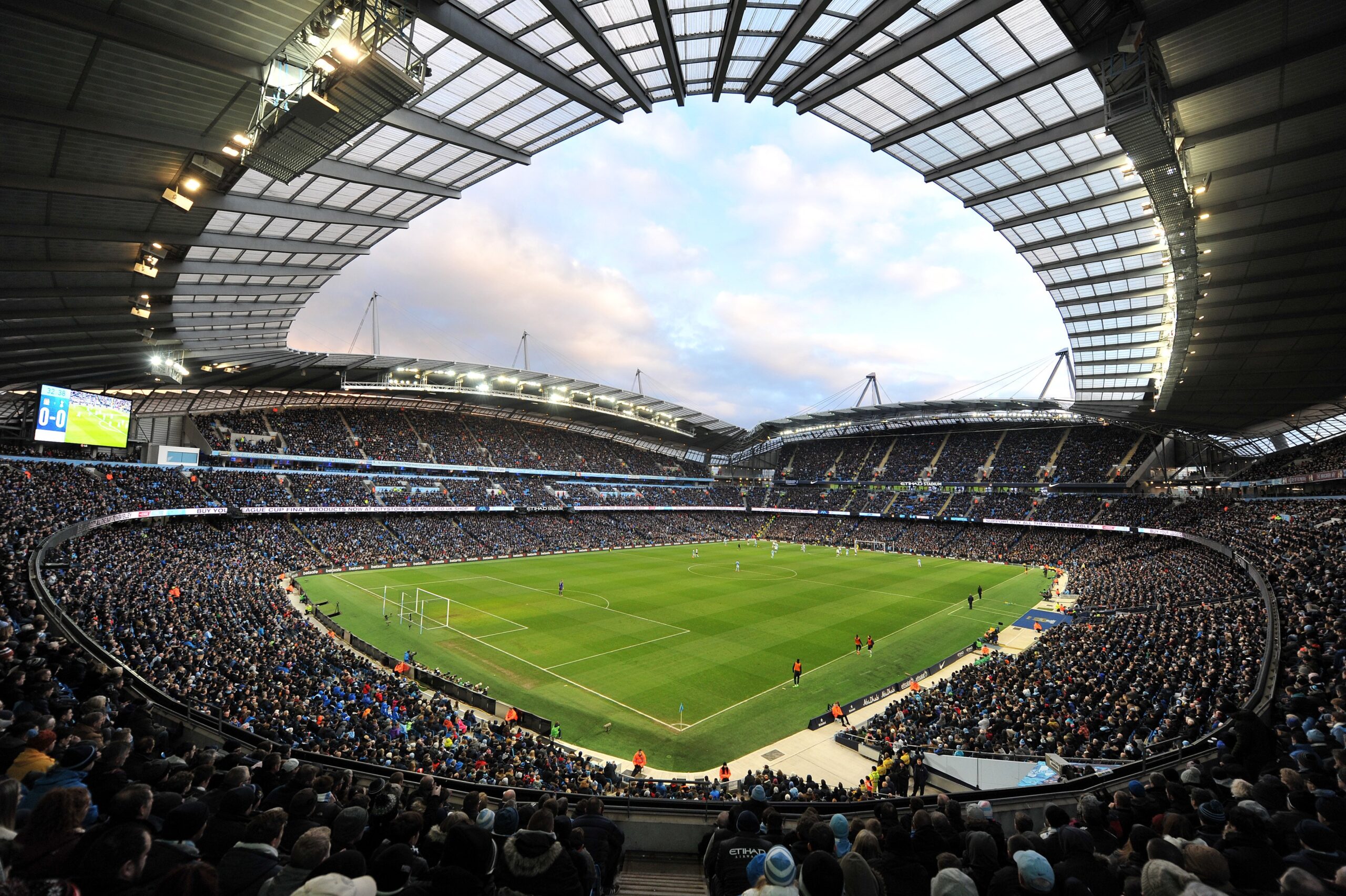
- Introduction
- Importance of football stadiums in the sport
- Criteria for determining the “most used” stadiums (capacity, frequency of matches, iconic events)
- 1. Camp Nou (Barcelona, Spain)
- Overview and history
- Capacity and significance
- Frequency of use and major events
- 2. Wembley Stadium (London, England)
- Overview and history
- Capacity and significance
- Frequency of use and major events
- 3. Estadio Azteca (Mexico City, Mexico)
- Overview and history
- Capacity and significance
- Frequency of use and major events
- 4. Maracanã (Rio de Janeiro, Brazil)
- Overview and history
- Capacity and significance
- Frequency of use and major events
- 5. Santiago Bernabéu (Madrid, Spain)
- Overview and history
- Capacity and significance
- Frequency of use and major events
- Honorable Mentions
- Brief mentions of other highly used stadiums (e.g., Old Trafford, Allianz Arena)
- Conclusion
- Summary of why these stadiums are so heavily used
- Their impact on the sport globally
- FAQs
- Which stadium hosts the most matches annually?
- What is the largest football stadium in the world by capacity?
- How do stadiums contribute to a team’s home advantage?
- Which stadium has hosted the most World Cup finals?
- How do modern stadiums compare to older ones in terms of usage?
5 Most Used Football Stadiums in the World
Football stadiums are more than just structures; they are the heart and soul of the sport. These iconic venues have witnessed some of the greatest moments in football history and continue to host countless matches every year. The most used stadiums are not just frequented by their home teams but also serve as stages for international competitions, concerts, and other significant events. In this article, we’ll explore five of the most used football stadiums in the world, delving into their history, significance, and the role they play in the global football scene.
1. Camp Nou (Barcelona, Spain)
Overview and History:
Camp Nou, home to FC Barcelona, is one of the most iconic football stadiums in the world. Opened in 1957, it has been a fortress for the Catalan giants and a symbol of the club’s rich history. The stadium has undergone several renovations over the years to maintain its status as one of the premier football venues globally.
Capacity and Significance:
With a seating capacity of approximately 99,354, Camp Nou is the largest stadium in Europe. Its massive capacity allows it to host not only La Liga and UEFA Champions League matches but also significant international fixtures, including matches for the Spanish national team.
Frequency of Use and Major Events:
Camp Nou is in constant use throughout the football season, hosting FC Barcelona’s home games, which can be as many as 30 to 40 matches a year, depending on their domestic and European campaign. Additionally, the stadium frequently hosts concerts and other events, making it one of the most used stadiums in the world.
2. Wembley Stadium (London, England)
Overview and History:
Wembley Stadium is often referred to as “The Home of Football.” Originally opened in 1923 and rebuilt in 2007, Wembley has been at the center of English football for nearly a century. It is synonymous with some of the greatest moments in football history, including England’s 1966 World Cup victory.
Capacity and Significance:
Wembley boasts a seating capacity of 90,000, making it the largest stadium in the UK. Its iconic arch is visible from across London, symbolizing its importance in the world of sports.
Frequency of Use and Major Events:
Wembley is one of the busiest stadiums globally, hosting a wide range of events. It is the venue for England’s home matches, FA Cup finals, League Cup finals, and play-off finals, among others. Additionally, it hosts major concerts, NFL games, and other large-scale events, ensuring it is in near-constant use.
3. Estadio Azteca (Mexico City, Mexico)
Overview and History:
Estadio Azteca is one of the most famous stadiums in the world, known for hosting two FIFA World Cup finals (1970 and 1986). Opened in 1966, it has been the home of Club América and the Mexican national team, witnessing some of the most iconic moments in football history, including Diego Maradona’s “Hand of God” goal.
Capacity and Significance:
With a capacity of 87,523, Estadio Azteca is one of the largest stadiums in the world. It has a unique atmosphere that makes it a challenging venue for visiting teams, especially at an altitude of 7,200 feet above sea level.
Frequency of Use and Major Events:
Estadio Azteca is used extensively throughout the year, hosting Club América’s home matches, international fixtures, and a variety of other events, including concerts and political rallies. Its frequent use and historical significance make it one of the most iconic and busiest stadiums globally.
4. Maracanã (Rio de Janeiro, Brazil)
Overview and History:
The Maracanã is synonymous with Brazilian football. Opened in 1950 to host the FIFA World Cup, it has become a symbol of Brazil’s footballing heritage. The stadium has undergone several renovations, including major updates for the 2014 FIFA World Cup and the 2016 Olympics.
Capacity and Significance:
The Maracanã originally held over 200,000 spectators, though its capacity has since been reduced to approximately 78,838 for safety and comfort reasons. Despite this, it remains one of the most famous and frequently used stadiums in the world.
Frequency of Use and Major Events:
The Maracanã regularly hosts matches for Flamengo and Fluminense, two of Rio’s biggest clubs, as well as national team games. It has also hosted countless finals of the Copa Libertadores, Copa América, and the FIFA World Cup. Beyond football, the stadium is a popular venue for concerts and large cultural events.
5. Santiago Bernabéu (Madrid, Spain)
Overview and History:
The Santiago Bernabéu is the home of Real Madrid, one of the most successful football clubs in history. Opened in 1947, the stadium has been the site of numerous memorable moments, including multiple UEFA Champions League finals.
Capacity and Significance:
With a capacity of 81,044, the Bernabéu is one of the largest stadiums in Europe. It is not only a fortress for Real Madrid but also a symbol of the club’s global brand and prestige.
Frequency of Use and Major Events:
The Santiago Bernabéu is in constant use during the football season, hosting Real Madrid’s home matches, which include La Liga, Champions League, and Copa del Rey games. The stadium also hosts significant international fixtures, concerts, and other events, making it one of the most used football stadiums in the world.
Honorable Mentions
- Old Trafford (Manchester, England): Known as the “Theatre of Dreams,” it is the home of Manchester United and frequently hosts Premier League, Champions League, and international matches.
- Allianz Arena (Munich, Germany): Home to Bayern Munich, this modern stadium is known for its striking exterior and frequent use for Bundesliga and international games.
Conclusion:
These five stadiums are more than just venues for football matches; they are iconic landmarks that have witnessed some of the sport’s greatest moments. Their frequent use throughout the year, hosting everything from domestic league games to international finals, solidifies their status as the most used football stadium in the world. These stadiums are not only central to their respective cities but also to the global football community.
FAQs
- Which stadium hosts the most matches annually?
- Camp Nou is among the stadiums hosting the most matches annually, given FC Barcelona’s busy schedule across various competitions.
- What is the largest football stadium in the world by capacity?
- The Rungrado 1st of May Stadium in North Korea is the largest by capacity, holding 114,000 spectators, though it’s not as frequently used as the stadiums mentioned.
- How do stadiums contribute to a team’s home advantage?
- Stadiums contribute to home advantage by providing a familiar environment, passionate support, and sometimes challenging conditions for visiting teams, such as altitude or climate.
- Which stadium has hosted the most World Cup finals?
- Estadio Azteca is the only stadium to have hosted two FIFA World Cup finals (1970 and 1986).
- How do modern stadiums compare to older ones in terms of usage?
- Modern stadiums are designed with multi-functionality in mind, making them more versatile and capable of hosting a wider variety of events beyond football, such as concerts and conferences, which increases their usage.



